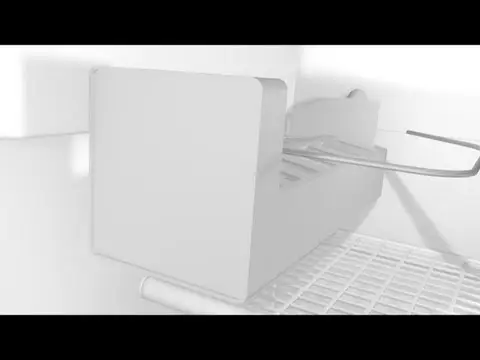How does a refrigerator make ice?


Refrigerators are an essential appliance in every household, providing a convenient way to store and preserve food. One of the most popular features of modern refrigerators is the ability to make ice. Whether it’s for a refreshing drink on a hot summer day or for keeping food cool during a power outage, ice production is a valuable function of a refrigerator. But have you ever wondered how a refrigerator actually makes ice? In this article, we will explore the process of ice production in a refrigerator, from cooling to freezing, and everything in between.
Understanding the Basics of Refrigeration
Before delving into the specifics of ice production, it’s important to understand the basic principles of refrigeration. A refrigerator works by removing heat from its interior, creating a cool environment for food storage. This cooling process is achieved through a combination of components, including a compressor, condenser, evaporator, and refrigerant.
The Role of the Ice Maker
The ice maker is a key component of a refrigerator that enables the production of ice. It is typically located in the freezer compartment and consists of several parts, including a water supply line, a water valve, an ice mold, a thermostat, and a heating element.
Step 1: Water Supply
The first step in the ice production process is the supply of water. When the ice maker is activated, a water valve opens, allowing water to flow into the ice mold. This water is usually sourced from the household’s plumbing system.
Step 2: Freezing
Once the water is in the ice mold, the freezing process begins. The thermostat in the ice maker senses the temperature and initiates the freezing cycle. The cooling system of the refrigerator lowers the temperature in the freezer compartment, causing the water in the ice mold to freeze.
Step 3: Harvesting
After the water has frozen, the ice maker goes into the harvesting phase. The heating element in the ice maker warms up, loosening the ice from the mold. Then, a motor or a mechanical arm pushes or rotates the ice out of the mold and into a storage bin.
Step 4: Refilling
Once the ice has been harvested, the ice maker prepares for the next cycle by refilling the ice mold with water. The water valve opens again, allowing water to flow into the mold. This process continues until the ice bin is full or until the ice maker is turned off.
Factors Affecting Ice Production
Several factors can affect the production of ice in a refrigerator. Understanding these factors can help optimize ice production and ensure a steady supply of ice.
- Temperature: The temperature in the freezer compartment plays a crucial role in ice production. If the temperature is too high, the ice may not freeze properly. It is recommended to set the freezer temperature between 0°F and 5°F (-18°C and -15°C) for optimal ice production.
- Water Quality: The quality of the water used to make ice can also impact the production process. Hard water with high mineral content can lead to the formation of scale or impurities in the ice maker, affecting its performance. Using filtered or purified water can help prevent these issues.
- Ice Maker Maintenance: Regular maintenance of the ice maker is essential to ensure optimal performance. Cleaning the ice mold, checking the water supply line for any blockages, and replacing worn-out components can help maintain efficient ice production.
Conclusion
In conclusion, the process of ice production in a refrigerator involves several steps, including water supply, freezing, harvesting, and refilling. The ice maker, a key component of the refrigerator, plays a crucial role in this process. By understanding the basics of refrigeration and the factors that affect ice production, you can ensure a steady supply of ice for all your cooling needs. So the next time you enjoy a cold beverage or need to keep your food fresh, you’ll have a better understanding of how your refrigerator makes ice.
Recent Posts
How do I create an engaging and informative online quiz or assessment?
Creating an engaging and informative online quiz or assessment can be a powerful tool for… Read More
What are the most effective methods for managing and reducing work-related stress in the hospitality industry?
Work-related stress is a common issue in the hospitality industry, where employees often face long… Read More
How can I improve my assertiveness and communication skills in a leadership position?
In a leadership position, assertiveness and effective communication skills are crucial for success. Being able… Read More
What are the key elements of a successful employee recognition and rewards program?
Employee recognition and rewards programs play a crucial role in motivating and engaging employees, as… Read More
How do I effectively manage and respond to customer feedback and reviews?
Customer feedback and online reviews play a crucial role in shaping a company's reputation and… Read More
What are the best strategies for effective time management as a stay-at-home parent?
Effective time management is crucial for stay-at-home parents who juggle multiple responsibilities on a daily… Read More